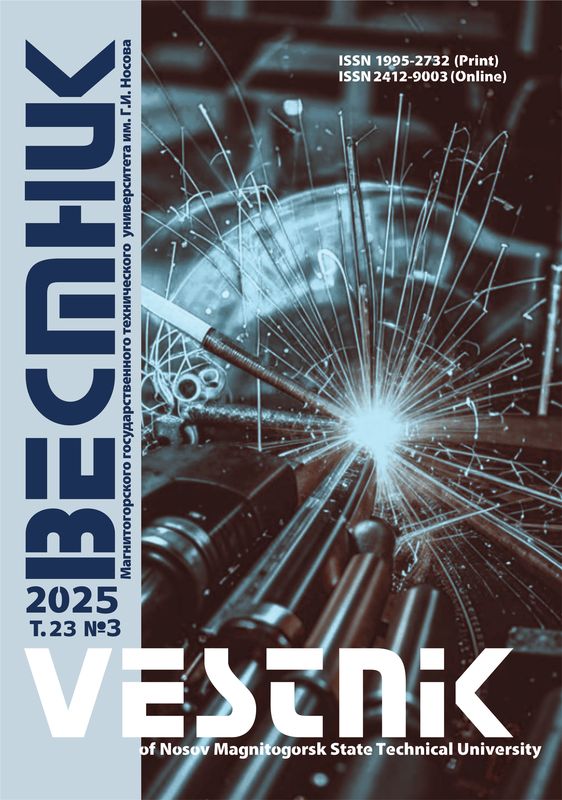Abstract
Problem Statement (Relevance): The aim is to summarize the experience of Russian and international researchers looking at the migration of gold and combined elements at the biochemical level; to develop an efficient combination technique for recovery of valuable components from industrial waste with the help of electrochemical actions and sorption; to minimize waste due to additional recovery of gold and combined elements and active leach solutions; to carry out experiments to study the impact of two-stage electrosorption when processing refractory mineral waste using electrosorbers; to evaluate the potential of applying a two-stage electrosorption process to recover the remaining gold from the mineral particles, solutions and slurries and to obtain some theoretical evidence supporting the use of electrosorbers to intensify the extraction of dispersed gold through the efficient use of the preparation techniques depending on the material composition and on how gold is integrated in the mineral matrix. Objectives: The research aims to provide a comprehensive geotechnology that can effectively minimize mining waste and provide proper reclamation techniques for various types of mining sites. Methods Applied: The diverse methods applied in the research include theoretical research, synthesis, multifactorial design of experiments, mathematical treatment of experimental data, particle size distribution and mineralogical, spectroscopic, chemical, X-ray phase, optical, microscopic, bacterioscopic analysis, electron microscopy, atomic absorption, assay test, X-ray diffraction, as well as production testing, laboratory tests, large-scale laboratory and pilot tests for extraction of gold from pre-conditioned minerals present in solutions and slurries. Originality: This research offers theoretical evidence of the migration of gold, including its thiosulfate form (S2O3²-). The proposed hypothesis states that the migration is preceeded by the sulfur oxidation. Empirically, the following differentiators were established for the method of extracting the remaining gold from solutions and slurry: before being fed to the electrosorber the mineral particles are subjected to regrinding for recovery of dispersed gold; the ion exchange sorbent is introduced into the reactor in the form of CN~ for leaching the dispersed gold at the initial recovery stages and in the form OH~ - for extracting the cyanide complexes of gold and cyanides at the subsequent recovery stages, with minimized waste occurring due to leaching and sorption. Smaller plants have their electrosorber for extracting gold from slurry built as a vertical row of sections. Each section consists of two concentrically mounted cylinders fixed to one another. The inner cylinder has openings the size of which is less than the size of ion exchange sorbent granules. The electrodes are installed in the outer cylinder, with the anode following the cathode as the slurry flow goes. The inner cylinder of each section has an opening at the bottom and is connected to the outer cylinder of the next section with a bypass pipe. The second electrosorber is designed for big plants. It consists of two horizontal sections, each section is provided with an outlet grid, the size of the openings in which is less than the size of ion exchange sorbent granules. The electrodes include anodes located in the first section and cathodes and anodes located in the second section. The electrodes have a vertical arrangement, and the second section has a nozzle at the bottom for sorbent removal. Practical Relevance: Applications have been submitted for various electrosorber options and methods of extracting gold from slurry, solutions and mineral particles.
Keywords
Dispersed gold, colloidal gold, electrosorption, ion exchange electrosorption, gold recovery from slurries, solutions, tailings.
1. Filippova E.V. Development of ecological and protective geotechnology on the basis of ion-exchange sorption. The Strategies of Modern Science Development: X International scientific-practical conference. USA: CreateSpace, 2016, рр. 36-38.
2. Sekisov A.G., Zykov N.V., Korolev V.S. Dispersnoe zoloto [Dispersed gold]. Chita: ChitGU, 2007. 269 p. (In Russ.)
3. Sekisov A.G., Manzyrev D.V. The cyclic nature of solid-phase and liquid-phase migration and clustering of gold tectonic-magmatic zones. Rudoobrazuyushhie protsessy: ot geneticheskikh kontseptsij k prognozu i otkrytiyu novykh rudnykh provintsij i mestorozhdenij: Materialy Vseros. konf., posvyashhennoj 100-letiyu so dnya rozhdeniya akad. N.А. Shilo [Ore-forming processes: From genetic concepts to forecasting and the discovery of new ore deposits and provinces: Proceedings of the Conference marking the 100th birthday of Academic N.A. Shilo]. Moscow: IGEM RAN, 2013. 167 p. (In Russ.)
4. Sekisov A.G., Manzyrev D., Lavrov A.Yu., Smolich K. The geotechnology for the development of Shakhtama tailings. Zolotodobyvayushhaya promyshlennost [Gold industry]. 2013, no. 3(57). Available at: http:// zolotonews.ru/news/34560.htm (Accessed June 6, 2016)
5. Terry McNulty. Cyanide Substitutes. Mining Magazine. Vol. 184, no. 5, May 2001, pp. 256–258, 260–261.
6. Vlassopoulos D., Wood S. Gold speciation in natural waters: 1. Solubility and hydrolysis reactions of gold in aqueous solution. Geochim. Cosmochim. Acta. 1990, vol. 54, pp. 3–12.












